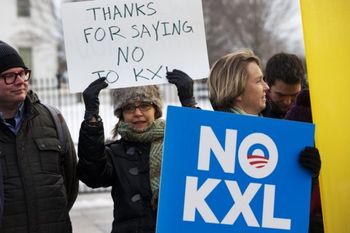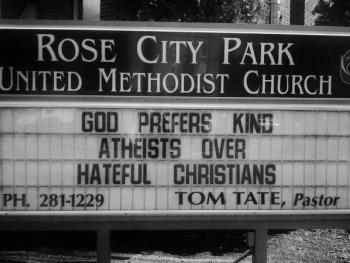
Moth-Eaten Eviction Moratorium Leaves Hundreds of Thousands Without a Roof
2021-04-08
by Eleanor Goldfield
This article originally appeared on Mint Press News. Please check out their site for more radical and independent journalism!
“Raise your hand if you can’t pay rent,” she yelled sharply and resolutely into a microphone. A Spanish translation echoed her words as hands shot up across the crowd. “Now make that into a fist. Because we gotta fight! It’s only when we fight that we can win!” Cheers and hollers muffled by face masks reverberated off the brick facades. Cars honked as they drove by, throwing solidarity fists at the “Cancel Rent” posters lined up along the sidewalk. A woman with a “Food not Rent” banner waved back with encouragement.
According to the Center on Budget and Policy Priorities, “some 22 million adults reported that their household didn’t have enough to eat,” with Black and Latino households more than twice as likely as white residents to go hungry. Based on data collected from March 3 to March 15, 2021, an estimated one in six renters was not caught up on rent — and here, again, Black, Latino, and Indigenous households were twice as likely as White renters to be behind. One can imagine then the raised hands of millions turning into fists – literally the hungry, the tired and poor, “the huddled masses yearning to breathe free,” which our Statue of Liberty so ironically wears as a welcome to those coming in to the country. That’d be a hell of a sight – and a hell of a force.
Sierra Ramírez, the tenant organizer at the Woodner Apartments in Washington, continued, calling on all her fellow renters to stop paying rent and to organize not just for rent cancellation but for their overall human dignity: “What is possible when we come together as a working class? Everything. Everything is possible.” She asked those gathered to think about the big picture, to think “about the kind of dignity we want for our community, for our society,” and to build it. In this way, she said, “we can stop anything – even war.”
As the late March afternoon flecked sun halos across the pavement and grass where kids ran around playing, the community building that Ramírez spoke about was palpable. Folks picked through groceries from the mutual-aid tables and boxes while others spoke to those standing by the tenant union table. Neighbors chatted behind masks and bilingual signs that read “Defund the Police,” and “Don’t Exclude Immigrants!” Organizers connected with tenants of other buildings who were curious about this push. Folks pulled out instruments and started to play. The action was part celebration, part protest, and 100% grassroots.

The movement to cancel rent is in this sense nothing new. It’s another branch of the tree rooted in justice, human rights, and a livable future for all, intersecting with and encompassed by racial justice, public health, environmental justice, anti-capitalism, anti-colonialism, and more. Growing from the call and demand that housing is a human right, this branch stretches across the country – the richest nation in the world — where we sure as shit can afford to house the homeless, provide affordable housing, and stop evictions.
A moratorium full of holes
Here some might point to the eviction moratorium as proof that we at least have that covered. Allow me to unceremoniously burst your bubble. According to ongoing tracking by The Eviction Lab at Princeton University, during the pandemic, landlords have filed for 284,490 evictions – and that’s just in five states and 27 cities.
But how could this be? After all, a moratorium shouldn’t allow for hundreds of thousands of households to fall through the cracks. Well, let’s just say that “moratorium” is a misnomer. This moratorium is more like a bottleneck on a freeway: it’ll eventually let up, but things are just a little slowed down right now.
What should have been a fierce and clear-cut roadblock allows for landlords to evict tenants for reasons other than non-payment, and in places where leases have to be renewed by the landlord, they can just choose not to renew them. Furthermore, the burden lies on the tenant to provide their landlord with a signed CDC declaration that took me, a journalist, 10 minutes to find online when I already knew what I was looking for. And lest we forget, internet access is not a luxury every American can afford.
Only 52% of households earning less than $25,000 own or use a computer and, as reported by TruthCo, “78% of Whites, 68% of African Americans, and 66% of Latinos nationwide use the internet. In rural areas, however, only 70% of White Americans had adopted the Internet, compared to 59% of African Americans and 61% of Latinos.” In other words, that online declaration form might as well be a Willy Wonka golden ticket. Indeed, just knowing that you need to fill out a declaration is a fact seemingly more well-guarded than KFC’s secret sauce recipe. Age and gender also play a role here so, when taken all together, the most marginalized people are the most at risk of being evicted simply because they don’t have access to information about the measly protections available to them.

Landlords take advantage of this information gap and move forward with eviction proceedings – a trap into which thousands have fallen. After all, landlords can still file for eviction – Step Two in the five-step process of eviction: Notice, Filing, Hearing, Court Decision and Enforcement. So people see that notice on their door and think it’s all over when in fact, it’s really only just begun. That being said, many courthouses are moving forward with eviction proceedings and in several states, governors and state legislatures have effectively refused to pause evictions.
For example, here in D.C., a Superior Court judge ruled back in December that “legislation passed by the D.C. Council earlier this year banning landlords from filing eviction proceedings is unconstitutional and violates property owners’ rights.” So landlords are free to file away, leading to instances, as noted above, where people think they have to leave their homes in the midst of a pandemic. Fast forward to today, when the D.C. City Council voted to pass a bill that would allow landlords to evict tenants who pose a “current and substantial threat” to their neighbors, household members, and building staff — with housing advocates concerned that this will be used against any and all tenants that landlords want to get rid of, not least of all tenant organizers and those who haven’t been able to pay rent.
The bill, put forward by Councilmember Anita Bonds, is backed by the city’s Rental Housing Strike Force, a council put together by Mayor Muriel Bowser to address tenant/landlord issues that is suspiciously lacking in tenant voices, centering instead the voices and interests of landlords and developers. Ultimately the bill passed with some amendments — requiring, for instance, that alternative housing be secured in some cases prior to eviction — but housing advocates remain wary of the manifold opportunities for landlords to abuse this bill.
From California to the New York island…
D.C. is hardly alone in its struggles against a vague and weak ‘moratorium.’ In Idaho, tenants who have tried to use the moratorium as a defense have had judges knock it down as invalid or insufficient. As The Idaho Statesman reported in late March, the Boise-based nonprofit Jesse Tree, which works with folks facing eviction, says they’ve seen the moratorium “successfully” used as a defense in only one case out of hundreds. And that person was ultimately evicted anyway. So, I guess, not that successful after all. In Akron, Ohio a couple who are both battling stage 4 cancer was evicted via Zoom court proceedings because their landlord sold the property, yet another glaring loophole in the “moratorium.” A fellow Akron resident didn’t know she had to bring that shifty CDC declaration to court, so her eviction proceedings went ahead as well.
Meanwhile, the CDC is duking it out in court with several states and judges who say the moratorium, despite all its loopholes, doesn’t apply to them. In other words, these states are arguing for the right to kill more people. A November 2020 study by SSRN found that states that lifted eviction moratoriums had a combined 433,700 excess COVID cases and 10,700 excess COVID deaths. But hey, I guess from their perspective, it makes more sense to just let COVID kill people than to have to deal with all sorts of stupid delays before evicting them. Still, even if the CDC wins these absurd cases, the question of how local courts will interpret both the moratorium itself and any related cases is anyone’s guess.
Self-help evictions (whoops, did someone change the locks?)
And yet, these are just official court proceedings. A far more insidious beast lies in the ‘informal’ eviction — aka illegal, aka self-help (it’s really called that) eviction. Here in D.C., while landlords are allowed to move forward with official filings, tenants are (for now) supposedly protected from being evicted until the moratorium is lifted. Well, words like “official” and “supposedly” don’t mean much when you come home to find that the landlord has changed the locks on your front door. Here again, landlords take advantage of the fact that so many of these low-income tenants don’t have access to information that would protect them from their landlord’s illegal actions. Immigrant renters and those without immigration status are at particularly high risk, as many are afraid of retaliation from the likes of ICE if they do assert their rights.

The Eviction Lab estimates that these ‘informal’ evictions are twice as common as official evictions, and last June The National Law Housing Project released a report that surveyed 100 legal aid and civil rights attorneys in 38 states and found that 91% of them reported illegal evictions in their area, with 53% actually seeing tenants being illegally locked out of their homes by landlords. Other intimidation and eviction tactics include cutting off utility service, refusing to make repairs, making threats, providing misinformation, and a slew of lease-violation accusations – such as a satellite dish or a partner who spends the night more than allotted for in the “guest” section of a lease.
Desperate Landlords of Beverly Hills?
On the flip side, several media outlets have been quick to point out the desperation many landlords are facing as they struggle to make ends meet themselves during the pandemic. It’s true that there are many small-scale landlords who, say, only own one property or rent out a basement of their home. But first of all, we have to make the distinction between losing some income and losing your home. Secondly, a report by CBS Money Watch from late March of this year shows that landlords, in general, are actually doing fine, and in many cases making big bucks off the pandemic.
For instance, Invitation Homes, the largest renter of single-family residences in the country, made $50 million more last year than in 2019. Mid-America Apartment Communities, owner of some 100,000 units, saw profits skyrocket by 60% last year. At the same time, apartment owners are doing perhaps the best of anyone in terms of staying up on their rent. January figures show that “just 2.3% of apartment building owners were behind on their rent, compared with 19% of hotel and 13% of mall proprietors.” They also have plenty of legal backing: 90% of landlords nationally have legal representation while only 10% of tenants do.
And when it comes to arguing for the so-called ‘mom and pop’ landlords, Diane Yentel, president of the National Low-Income Housing Coalition, points out that “With the latest stimulus bill, Congress has now put in billions in rental assistance, with most of that money going straight to landlords.” Meanwhile, you’d be hard pressed to find a renter who has come across any of those billions earmarked for rental assistance. Could it be that here again, we see a sadistic obstacle course of eligibility and accessibility issues combined with straight-up systemic dumbshittery? Indeed, we do. From state and local rollouts moving as slowly and crookedly as molasses through a pinball machine to having to “demonstrate a risk of homelessness,” it’s no wonder renters, the people who need aid the most, are not the ones getting it. And to be fair, even if they did get some assistance now, what good will that do when the debts are called in after the moratorium?
Here’s a little to tide you over
At the “Cancel Rent” rally, Ramírez took out a piece of paper and lifted it high into the air. “This is a bill,” she said. “It says I owe $13,000.” The crowd booed and gasped in response. According to the eviction “moratorium,” Ramírez will have to pay that and then some at the end of this sick purgatory. Renters not only are responsible for the rent they’ve missed but can also be looking at extra fees like late fees and interest. It’s yet another show of how vehemently out-of-touch our sociopathic politicians are that they think someone’s inability to pay $2,000 now will somehow translate into their being able to pay $20,000 later.
Of course, this could all be solved by comprehensive and loophole-free language. No forms, no golden tickets. If you have a home and it’s safe, stay in it. If you don’t, let’s get you one. Numbers from 2014 show that empty homes outnumber the homeless six to one and, while those stats have likely shifted in the past seven years, there are still plenty of homes for everyone, and more small-scale and creative solutions popping up all the time – like the tiny-house movement that’s been a benefit to the unhoused, those forced to downsize, and the minimalists alike.
The context is the crisis
This raises yet another important point: eviction was a crisis before the pandemic, and it will likely be one after. For instance, back in 2014, the MacArthur Foundation released a report showing that in Milwaukee, “a city of fewer than 105,000 renter households, landlords evict roughly 16,000 adults and children from 6,000 units each year. That’s 16 households evicted every day.” Black women were the most frequently evicted, prompting the report to draw parallels between Black men being locked up due to systemically racist mass incarceration, and Black women being locked out due to systemically racist eviction practices.
Likewise, giant, greedy, and shitty landlords were also a problem pre-pandemic. A 2019 investigative piece in The Atlantic showed that after the 2008 economic collapse, the federal government didn’t just bail out Wall Street, it gave them oodles of deals on things like empty houses, allowing them to easily purchase foreclosed homes by the hundreds: “Between 2011 and 2017, some of the world’s largest private-equity groups and hedge funds, as well as other large investors, spent a combined $36 billion on more than 200,000 homes in ailing markets across the country.” Tenants were promised competitive rent, 24/7 on-call maintenance, oodles of money to spend on upkeep, and more. Instead, investors took these promised perks straight to their banks and left renters in the lurch.

More than 100 million people rent in the U.S. — that’s more than 30% of the population, a percentage that’s been growing rapidly since 1965. And here again, even before the pandemic, rent was unaffordable in every single state (plus D.C.): according to a report last year from National Low Income Housing Coalition, the national housing hourly wage in 2020 for a modest two-bedroom was $23.96, a full $16.71 above the federal minimum wage of $7.25. The national housing wage is based on what a minimum-wage earner would need to afford a rental home without spending more than 30% of their income on rent, the idea being that above 30% you’re unable to pay for other necessities such as food and healthcare.
These problems are systemic. While rent cancellation and an actual eviction ban are necessary for the duration of the pandemic, the issues go far deeper and further back. A quick glance at housing-rights and rent-cancellation organizations from across the country shows many of the same demands — from short-term demands, such as those voiced by Cancel Rent DC, that “tenants will not accrue debt for nonpayment,” to the broader and more long-term goals set forward by Housing Justice for All in New York, demanding an end to homelessness and the reclamation of millions of apartments as social housing for all, protected from the private market.
Not like we’ve never done this
These demands are hardly unrealistic. After all, following significant pressure from the working class, President Franklin Delano Roosevelt instituted a social security system, a strong (unlike today’s measly $7.25) minimum wage with unemployment compensation, and a federal jobs program that employed millions during the economic collapse of the late 1930s. And then of course came the massive shift to a war economy in the 1940s. It’s clear that in a time bolstered by far more technological advancement, it’s not a matter of ability. It’s a matter of giving a shit. And while corporate media has been quick to compare President Joe Biden to Roosevelt, let’s be sure to point out, as Richard D. Wolff did on a recent episode of his show “Economic Update,” that Roosevelt’s changes were structural, not paltry bread crumbs that only lasted a few months. Biden is certainly no Roosevelt.
Structural changes require more work but they’re the only changes that are in fact change. I’ve written before about the importance of not lambasting so-called stop-gap issues such as universal healthcare, universal basic income, or indeed rent cancellation simply because these measures would exist within the confines of our capitalist system. Some things are worth fighting for despite their imperfections simply because they will support people in the here and now. They will lessen the oppressive weight of capitalism upon people’s lives.
Our battles should be waged based on what benefits our communities, not just what will benefit them in the dawning of a new world. The shit the Dems offer up as the “best they can do” is not worth fighting for. A consolation $1400 that many in need won’t get, kicking the eviction can (or, as we’ve seen, not even kicking it), or a small pot of federal funds earmarked for rental assistance that’s harder to get to than an actual pot of gold, are not worth fighting for. They, like the Democrats, represent hope in relief that’ll never come. They’re smoke and mirrors – a cheap magic trick played on a stage littered with broken promises, early graves and Orwellian machinations. We must not think that what the Dems put forward is either what we need or in fact the best they can do. It is neither. What will support the people, what will allow folks to not just survive but to thrive – there we must put our energies, our fight.
At the Cancel Rent action, a little girl rushes past me with a hot dog and I see another kid eyeing it with that pure, youthfully unveiled look of craving. More events like these are planned across the city – across the country — actions that combine immediate demands with community building for long-haul imagining and manifesting. From these times and spaces, we learn to color outside the lines of specific issues, to get messy with it. We learn and remember to not ask anything of the ruling class, but rather to ask it of each other. For, as Ella Jo Baker said, “if you have strong people, you don’t need strong leaders.” Strong people, raised fists. One building, and one block at a time.
Just Shelter has a clickable map that allows users to find housing rights organizations in your area: https://justshelter.org/community-resources/
This is part one of a two-part series on housing.































































